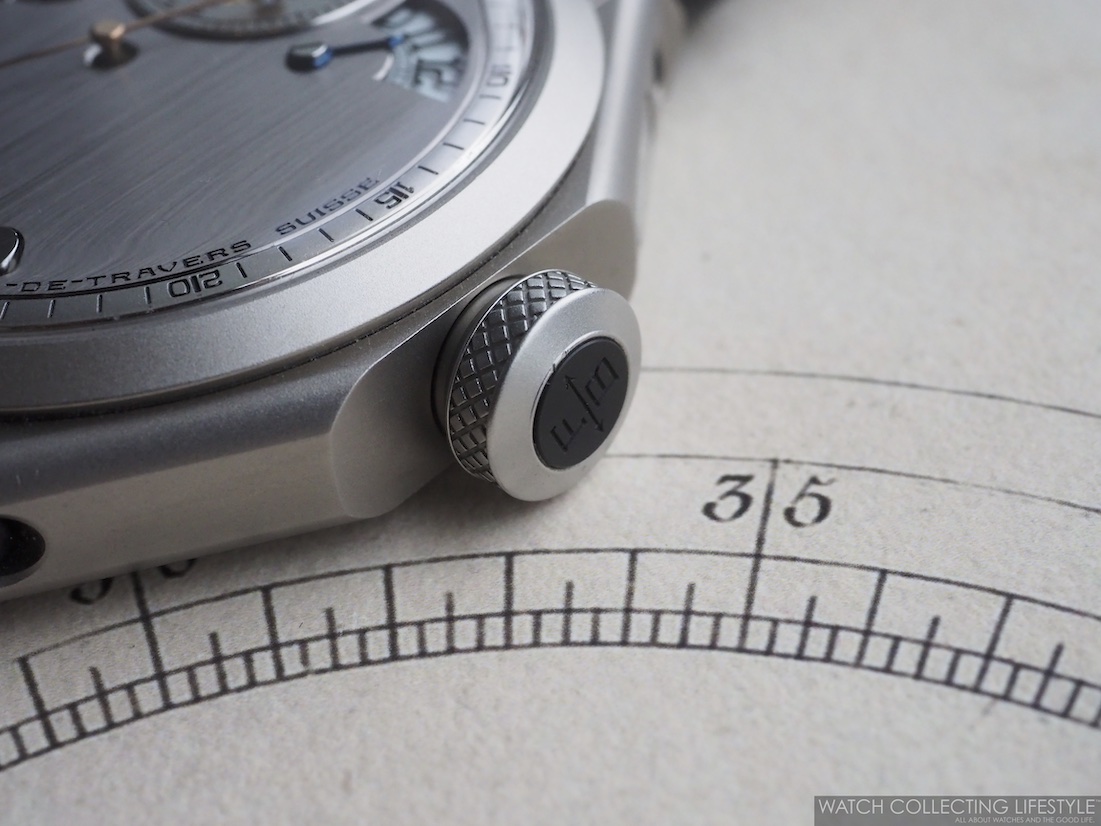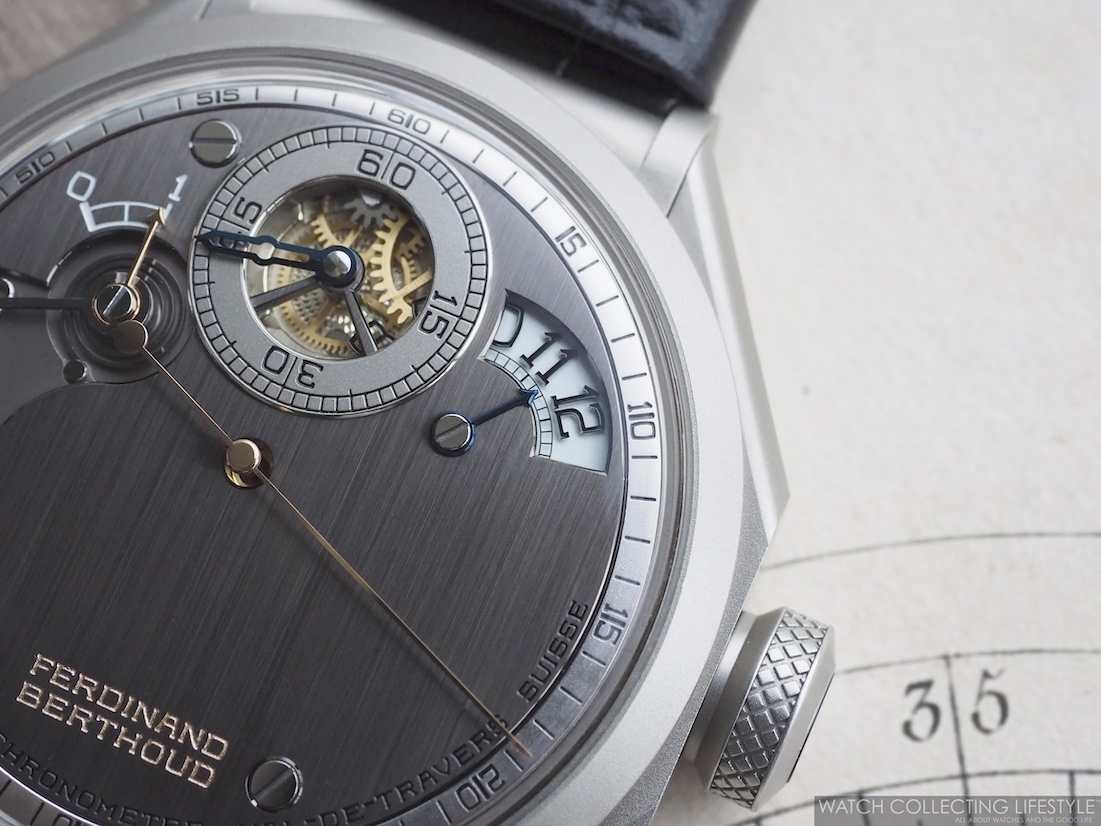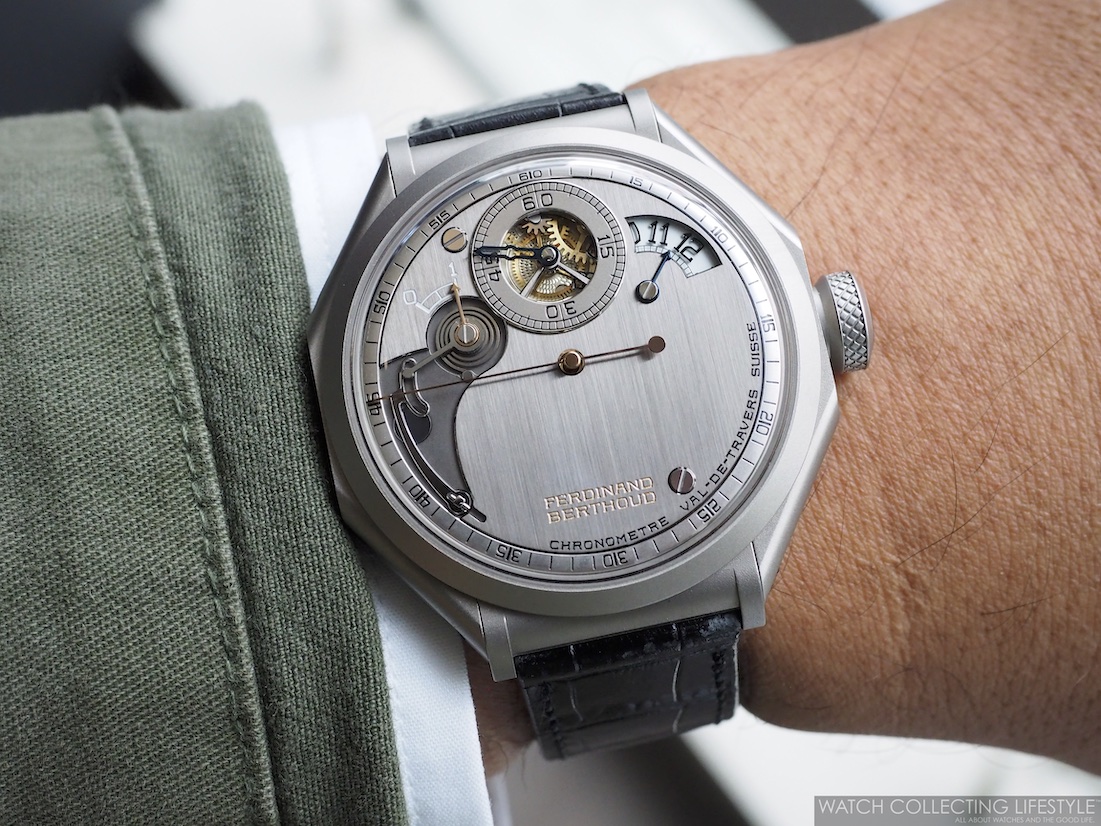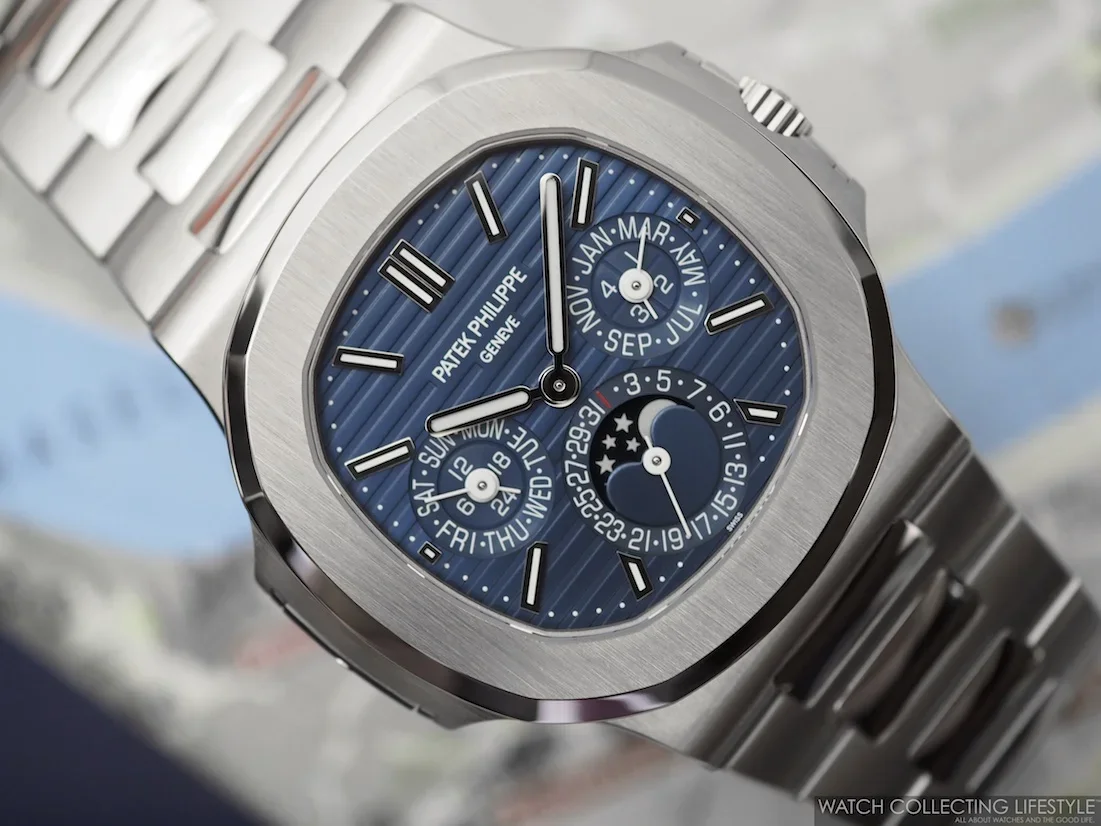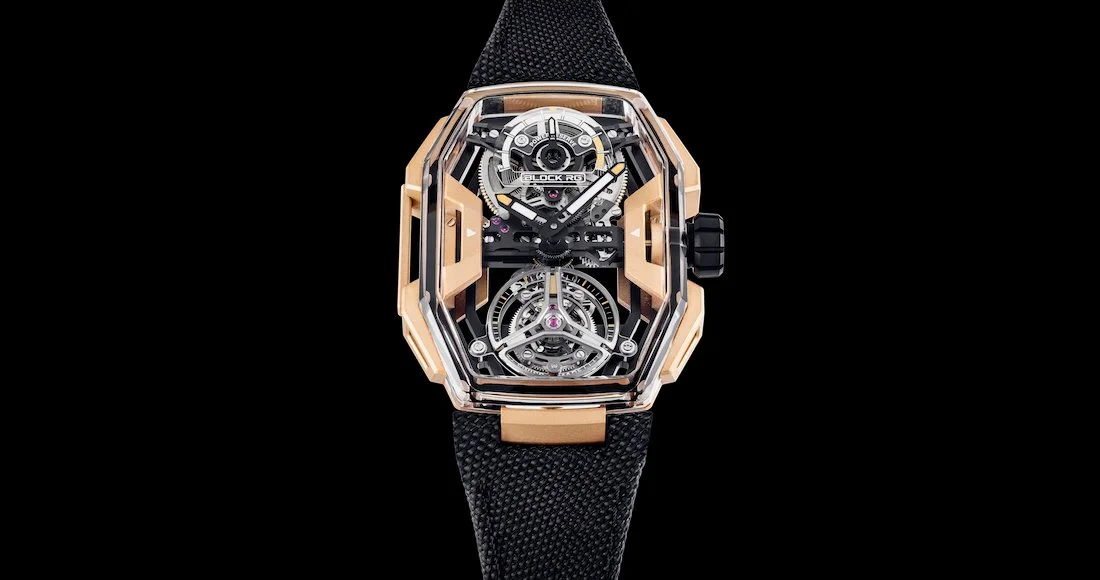With its original regulator-type display and its ultra-resistant cement steel case, the Ferdinand Berthoud Chronomètre FB 1R.6-1 takes its cues from the Marine Chronometer No. 7. and its FB-T.FC.R tourbillon calibre with fusee-and-chain transmission that can be admired through a sapphire crystal case-back and two lateral portholes offering a unique view inside this outstanding chronometer. The cement steel case is a carburized iron case where the molecular structure of the steel has been reinforced by a thermo-chemical process involving the diffusion of vapor-phase carbon guaranteeing a hardness of 1200 vickers and making it exceptionally corrosion-resistant and totally scratch-resistant.
The FB-T.FC.R calibre is built according to a unique architectural concept. This hand-wound movement features 18 nickel silver bridges framed by polished titanium pillars surrounding the mechanical organs. This construction is typical of 18th century marine chronometers. The architectural approach is picked up in the design of all the components, and especially in the symmetrical equilibrium of the movement. The distinctive nature of the FB-T.FC.R calibre lies in its inverted upside-down barrel and fusee, and particularly in the fact that both elements are suspended, meaning held on only one side.
A patent has been filed for the extremely sophisticated power-reserve indication mechanism. Visible through a cut-out in the half-bridge on the case-back side, a truncated cone moves up and down along an arbor connected to the barrel. This suspended cone is topped by a feeler spindle in the form of a mobile arm tipped with a watch jewel. The latter’s position on the cone reflects the barrel’s state of wind.
The feeler spindle in turn transmits the quantity of energy accumulated by the mainspring to a set of finely chamfered and rhodium-plated flat levers visible through a cut-out in the regulator plate. Its role is to amplify the displacement of the power-reserve hand. A spiral spring placed at the far end of its travel exercises a force on the base of the power-reserve hand. This spring serves to compensate for the play between the various components of this mechanism and to display the power reserve with peerless precision. The spring is made from a nickel-phosphorous alloy in order to guarantee the concentric deployment of the coils in all states of winding and unwinding, and thereby to avoid any unattractive distortion that might also be detrimental to the smooth running of the mechanism. Available in a limited edition of only 20 pieces.
Sticker Price $241,500 USD. For more info on Ferdinand Berthoud click here.

